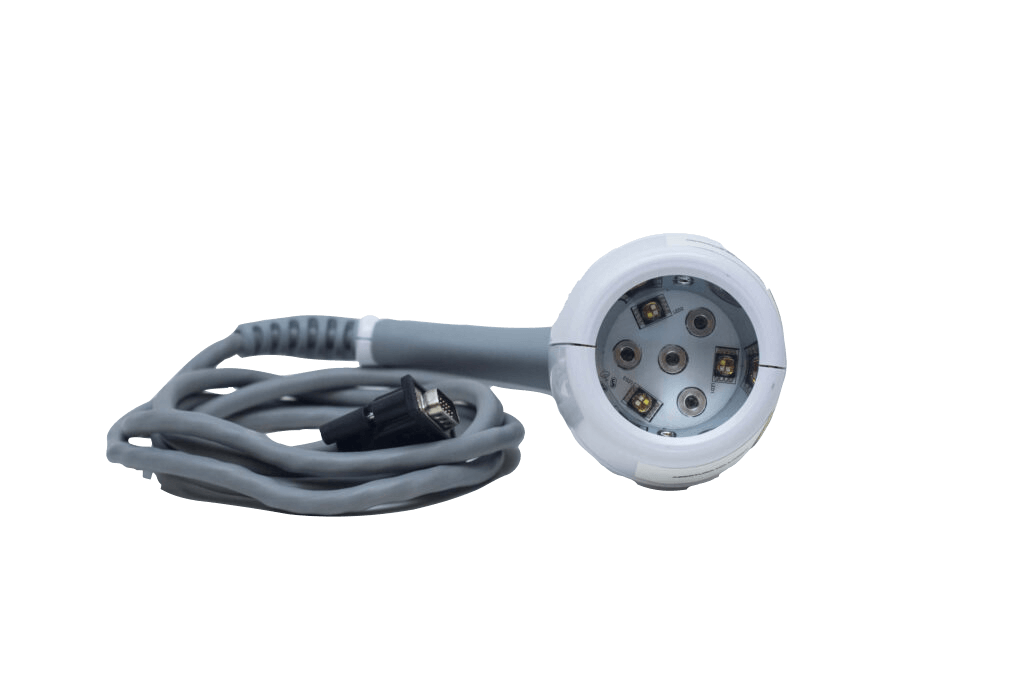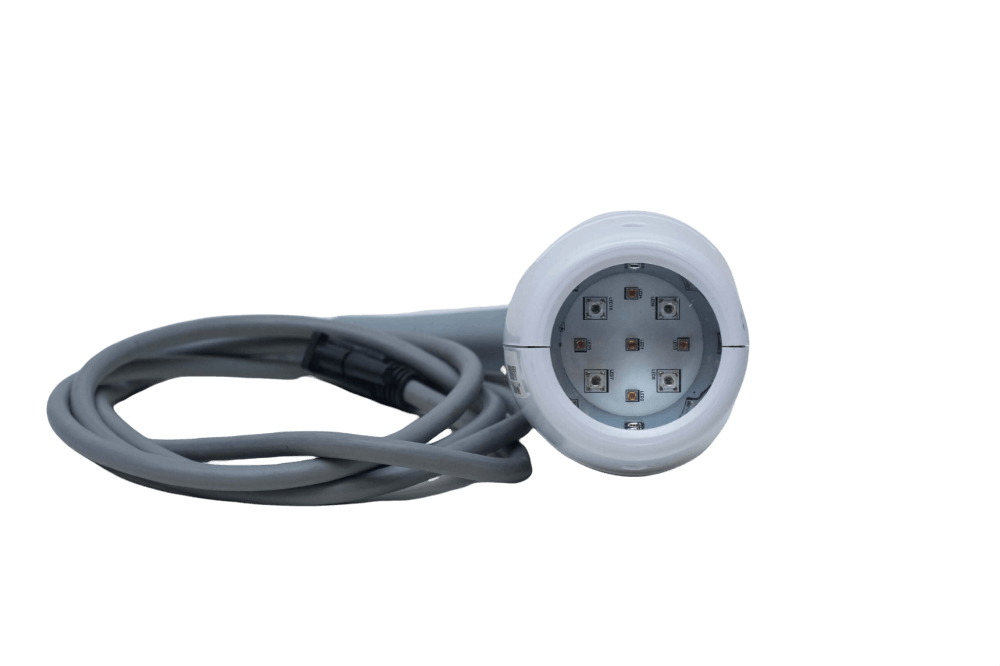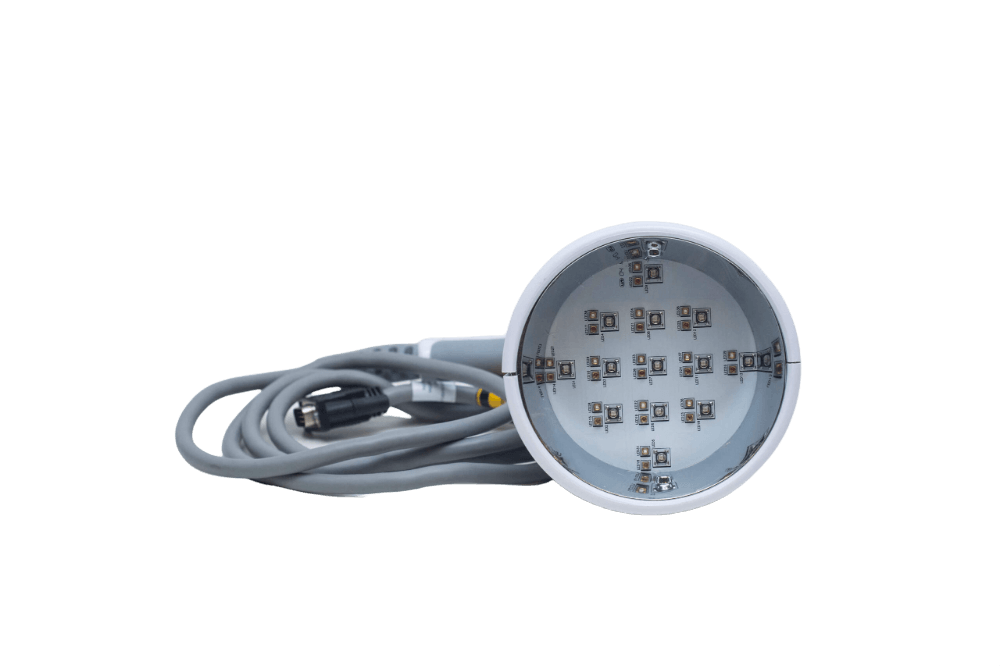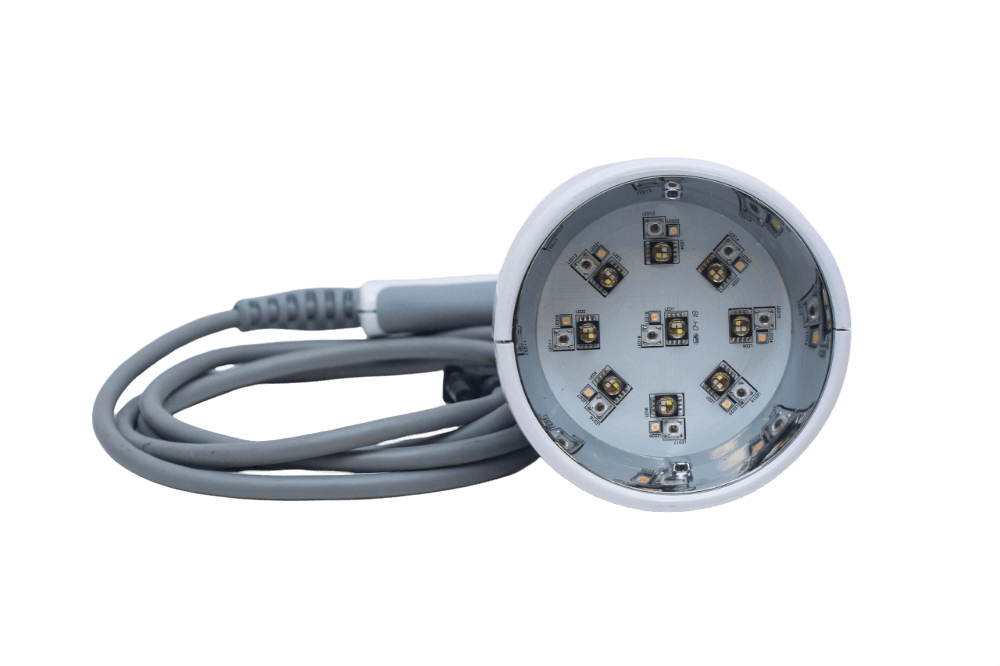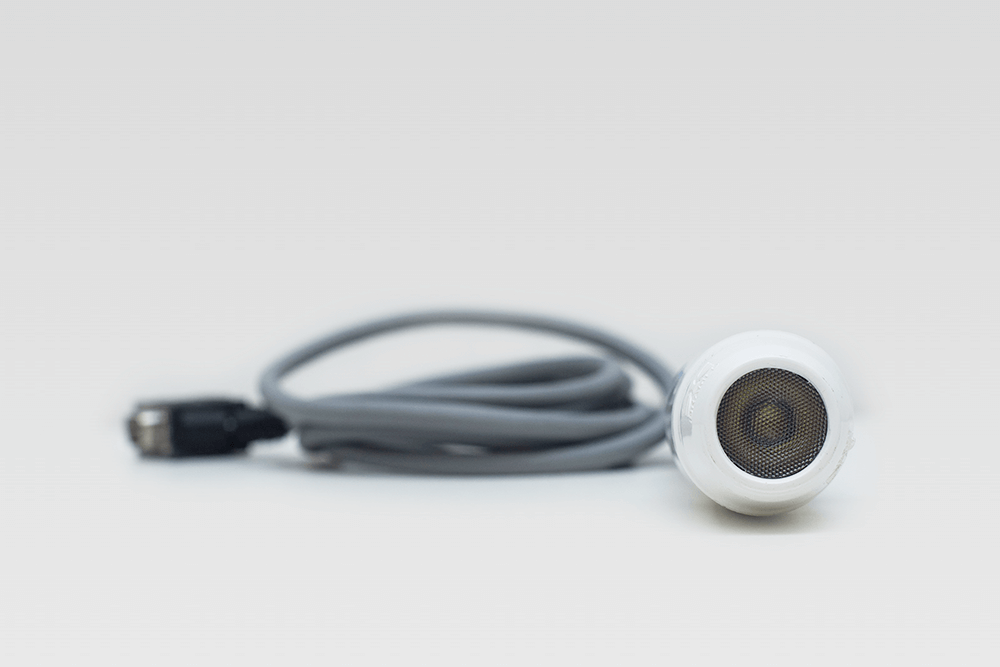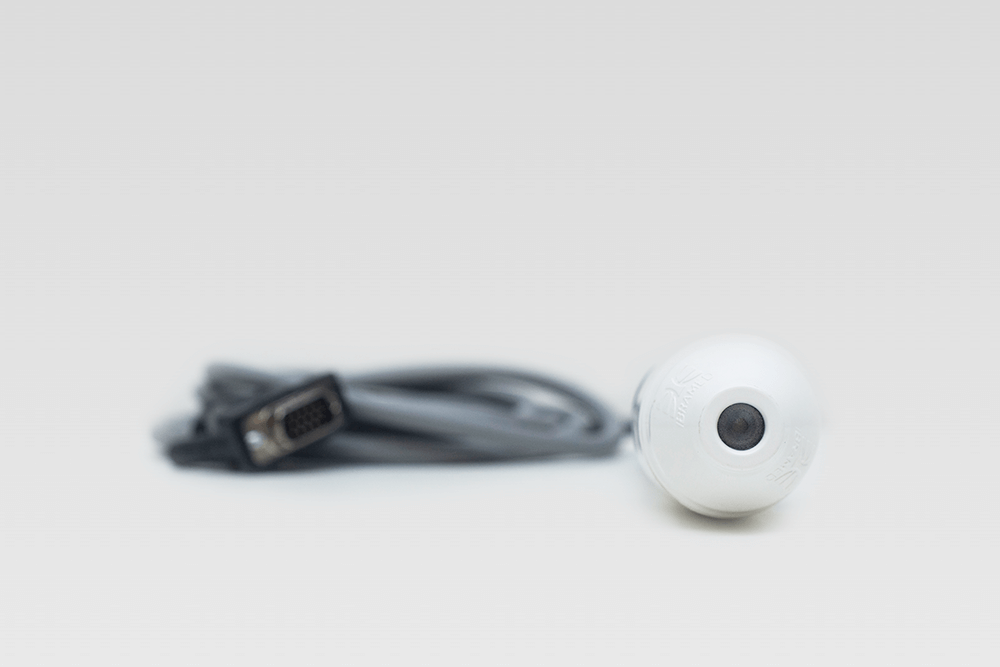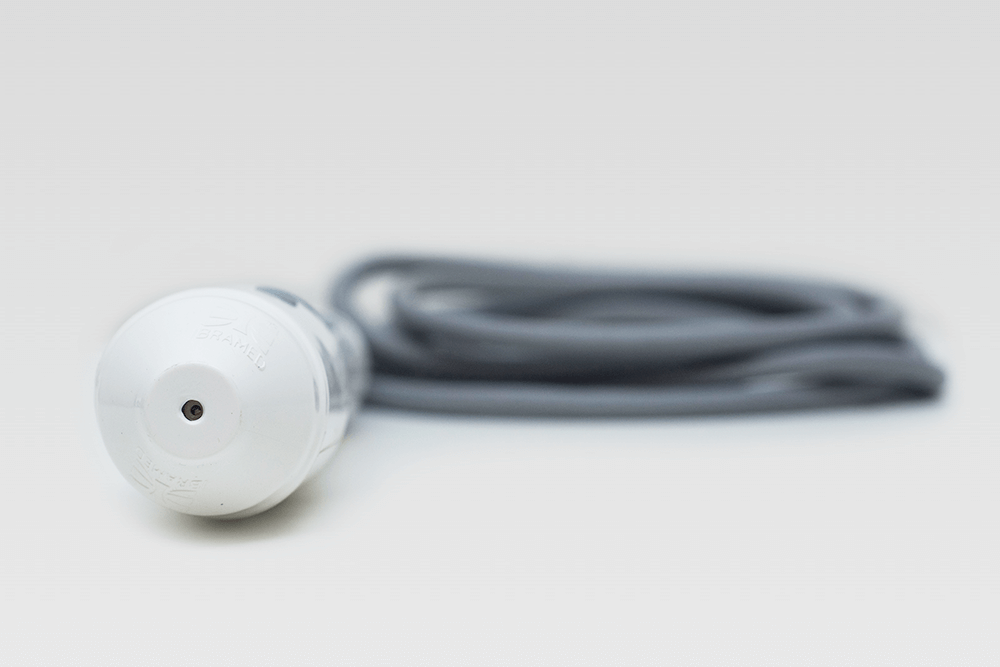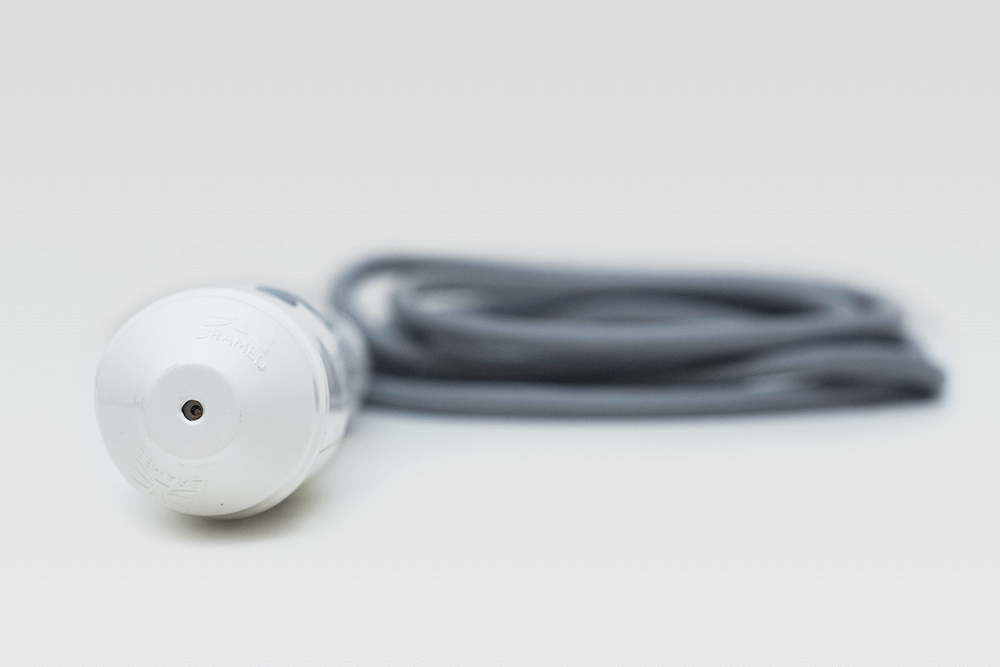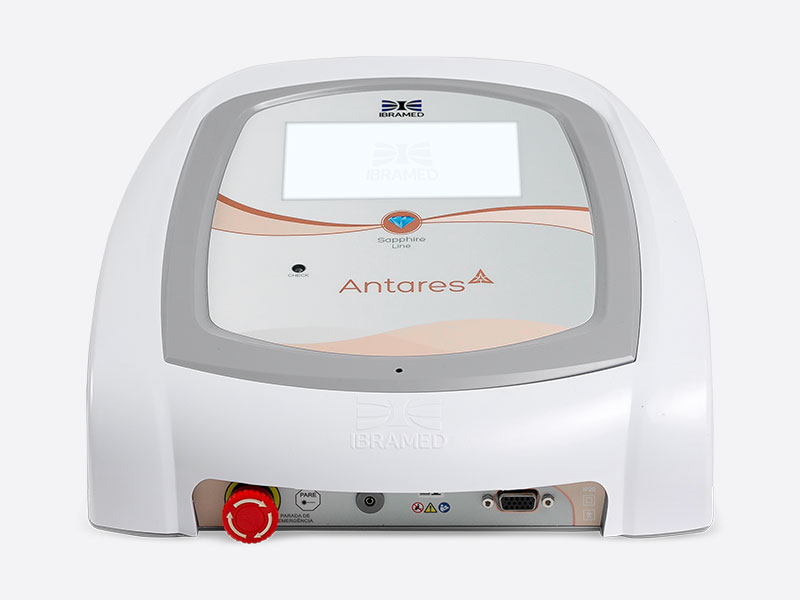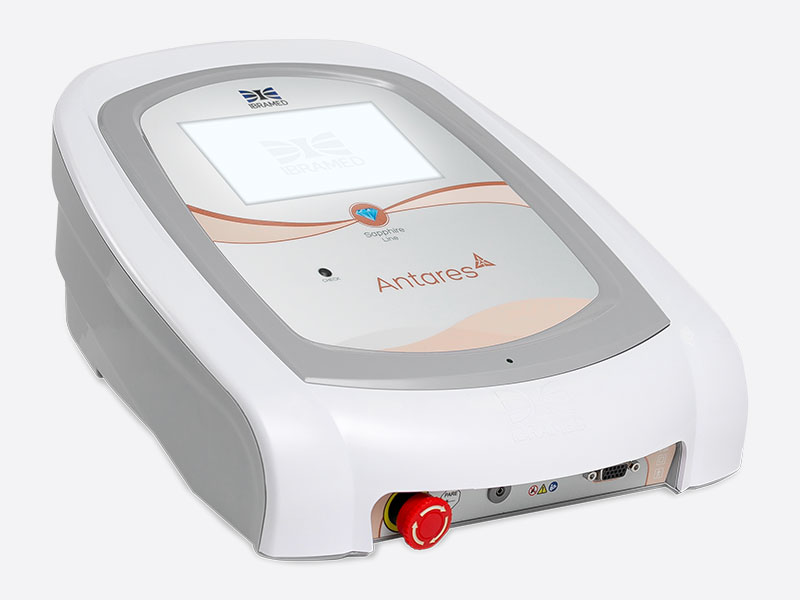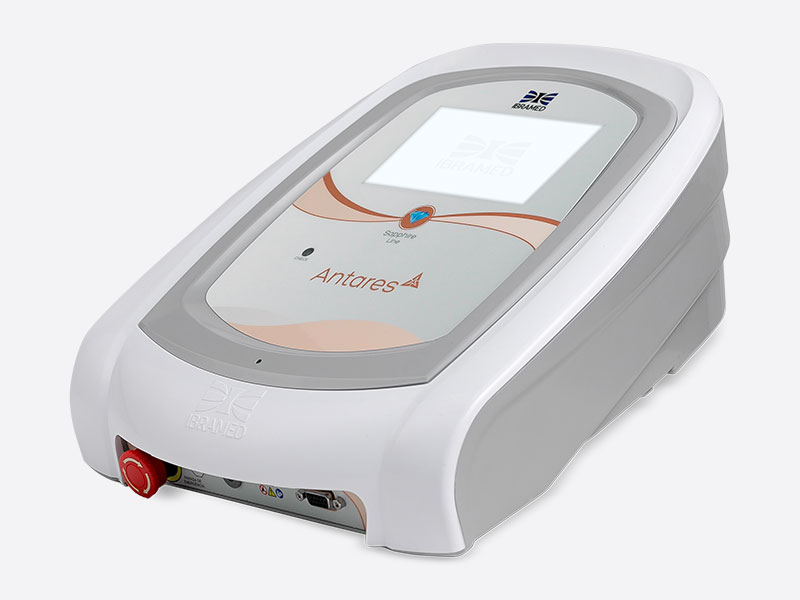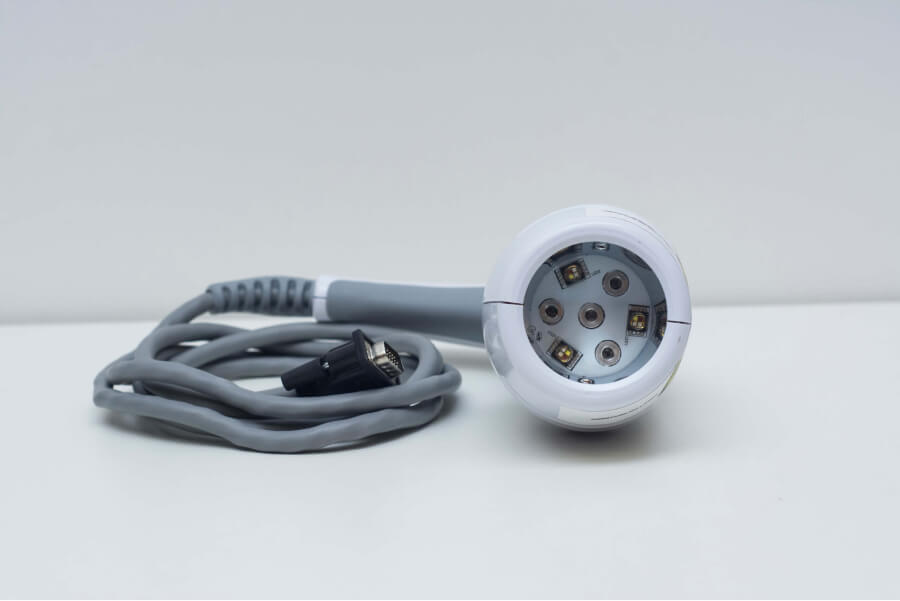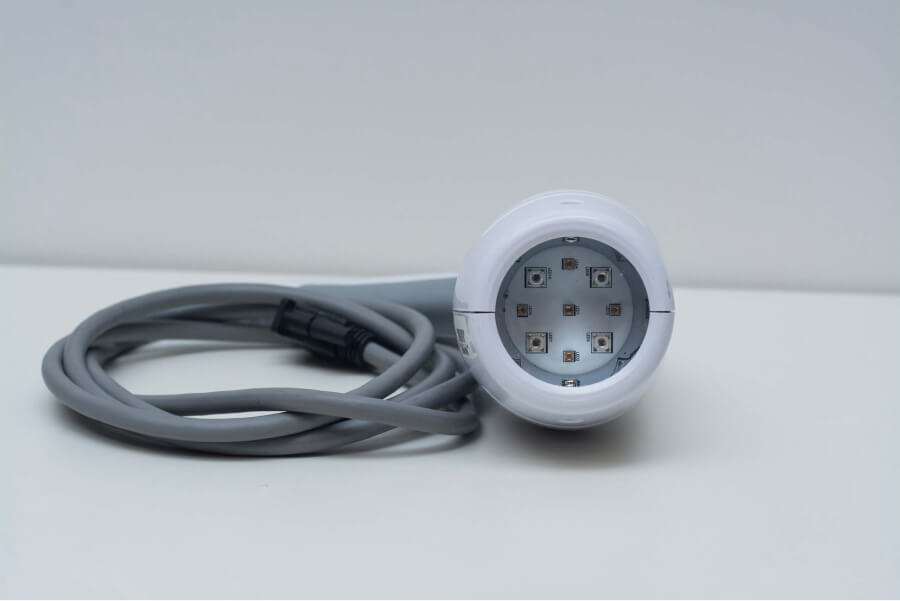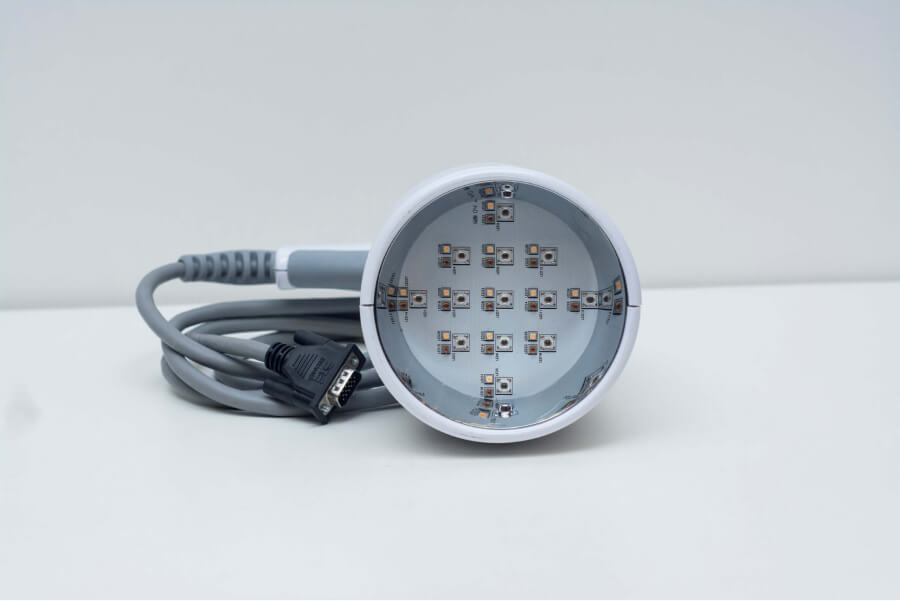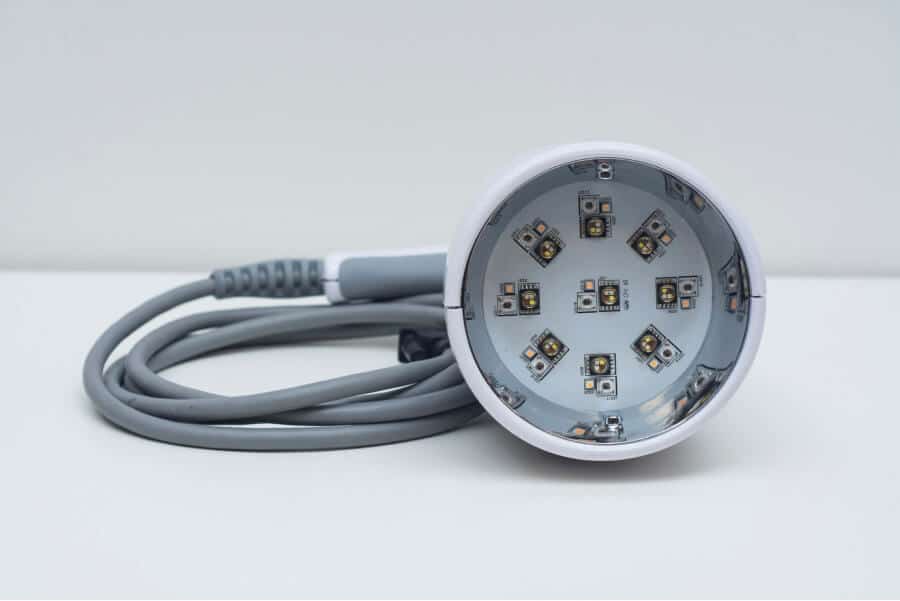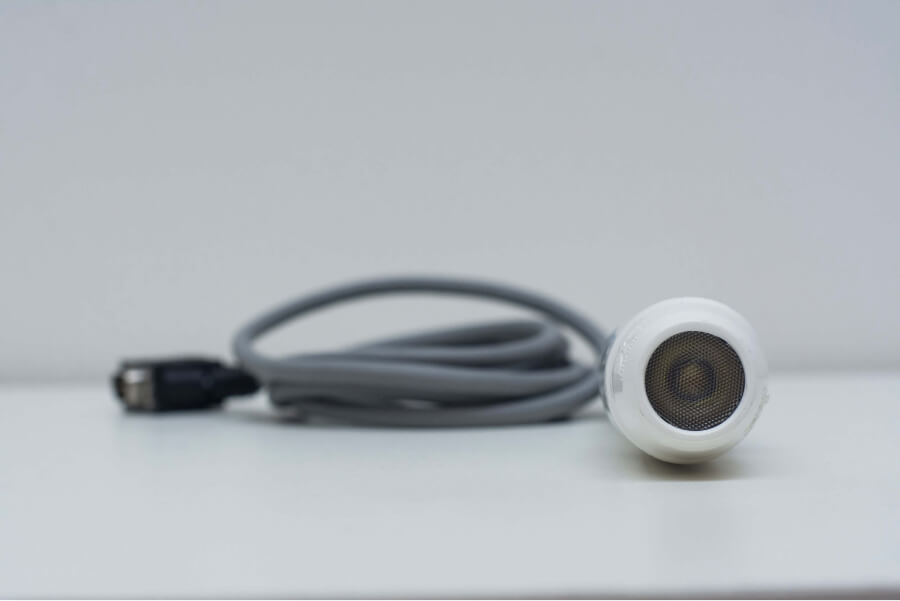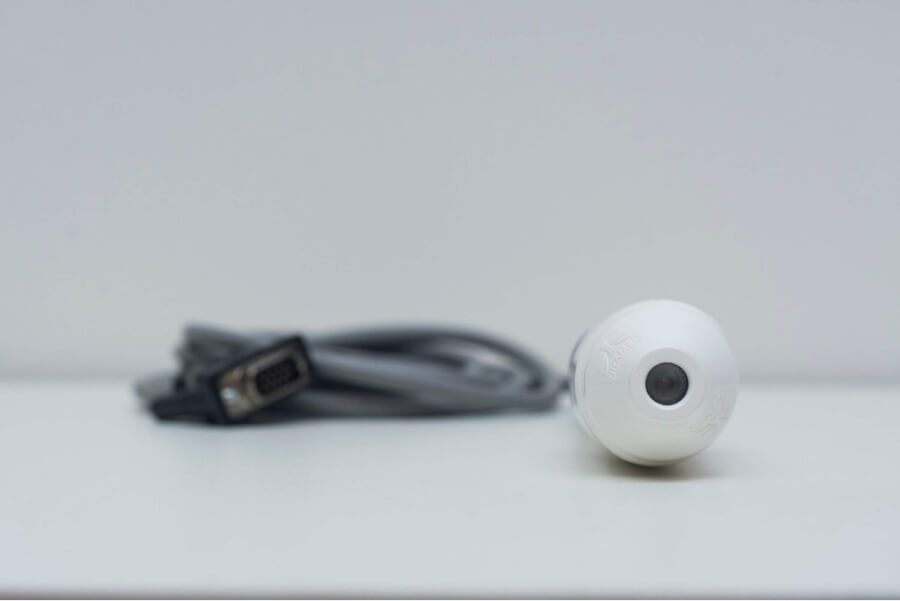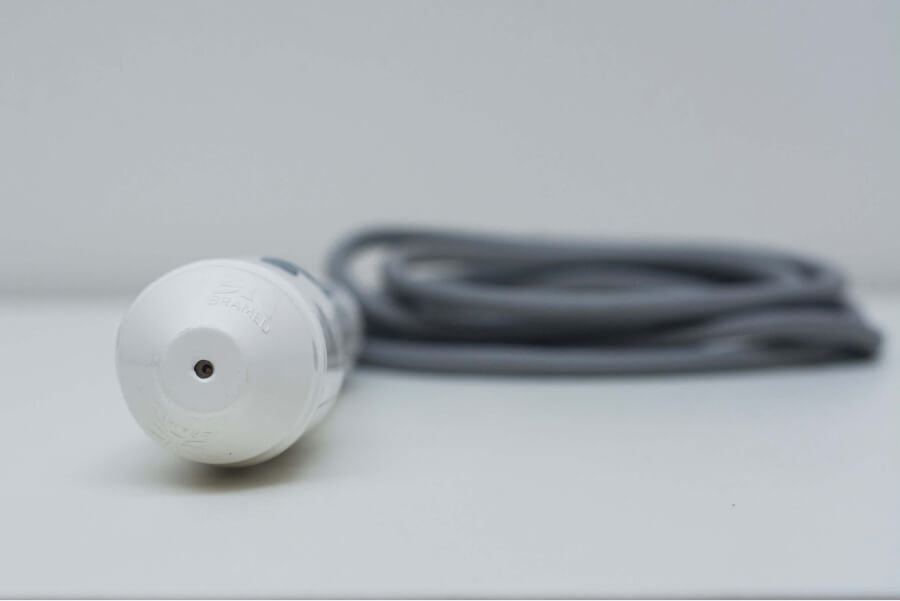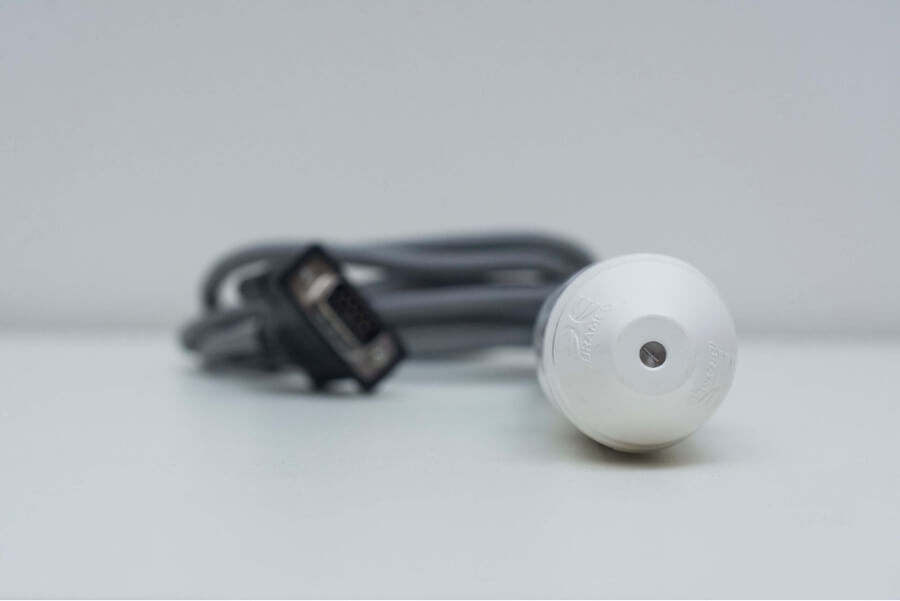Antares
Photobiomodulation
Antares is a device microcontrolled by photobiomodulation therapy and was developed for use in different areas of health and aesthetics. It has the possibility of operation with single applicators (probes) and applicators with laser and/or LED groups (cluster), which offer a new dimension of light therapy.
New generation of LEDs
New technology with higher power, lower light beam divergence and quasimonochromaticity, with cluesters with 13 diodes and powers that can reach up to 6500 mW, which allows treatment in large body areas and shorter application time.
Better uniformity of light distribution
In the development of Antares, studies and research were carried out to obtain the best distribution of Light in the treatment area, so that the entire region receives the same energy density.
For this, we use a differentiated technology in the distribution of LEDs in the Clusters, ensuring the ideal distance between them and the skin.
Exclusive reflective technology
The Antares Clusters feature the exclusive reflective technology, optimizing the concentration of Light at the application site, which allows for better clinical results.
Antares has several
scientifically based protocols for use in treatments in the area of:
- Facial Aesthetics;
- Body aesthetics;
- Hair Therapy;
- Rehabilitation;
- Podology
2C & 3C
Antares Exclusivity
Another unique feature of Antares is the 2C & 3C, which are differentiated protocols that allow combining different wavelengths in the same treatment session.
- Works in different structures and depths
- More practicality in calls
- Most effective results
Light emission check
Antares has a verification system, so that the emission of LED/laser radiation from the applicator to be used is validated before use. Whenever the equipment is turned on or the applicator is reconnected or replaced, it will be necessary to carry out the emission check only once before use.
Clusters & probes
Antares features different Clusters and Probes applicators, which have been designed to meet clinical needs with different configurations and combinations of LEDs and Lasers and different sizes for different body areas.
Clusters
Small cluster 1 – RGB LED and 808nm laser
Cluster P1, like P2, was designed to serve different audiences, mainly in the area of rehabilitation. Features RGB technology.
LEDS colors (wavelengths):
Red (630 nm)
Green (525 nm)
Blue (450 nm)
It has an Infrared Laser (808 nm)
Area of application: 80 cm2
Emission mode: continuous or pulsed.
Rehabilitation:
Arthritis; skin healing; chronic pain; Lymphatic drainage; lateral epicondylitis; herpes; ligament injury; trigger points; pre and post physical activity; burns; muscle strain; carpal tunnel syndrome; tendinopathy; uncontaminated ulcers; photodynamic therapy;
Small cluster 2 – 630nm LED and 850nm LED
By presenting only red and infrared, this cluster was designed to serve the area of rehabilitation. If you believe in the efficiency of LEDs and are looking for a lower cost cluster to act on musculoskeletal disorders, this is the applicator that was made for you.
LEDS colors (wavelengths):
Red (630 nm);
Infrared (850 nm).
It has an Infrared Laser (808 nm)
Application area: 20 cm2
Emission mode: continuous or pulsed.
Aesthetics:
Skin photoregeneration; photorejuvenation; hair phototherapy; hair phototherapy; hyperchromia; hyperchromia; lipolysis; post plastic surgery; rosacea; photodynamic therapy.
Rehabilitation:
Arthritis; skin healing; chronic pain; Lymphatic drainage; lateral epicondylitis; herpes; ligament injury; trigger points; pre and post physical activity; burns; muscle strain; carpal tunnel syndrome; tendinopathy; uncontaminated ulcers
Large cluster 1 – 590nm LED, 630nm LED and 850nm LED
The Cluster G1 features a total of 39 LEDs, making it ideal for large body areas providing less session time with the required efficiency.
LEDS colors (wavelengths):
Amber (590 nm);
Red (630 nm);
Infrared (850 nm)
Contact area: 80cm²; Emission mode: continuous or pulsed.
Aesthetics:
Cellulite; acne healing; hypertrophic scar; Lymphatic drainage; skin sagging; skin photoregeneration; photorejuvenation; hair phototherapy; hyperchromia; lipolysis; post plastic surgery; collagen remodeling; rosacea; photodynamic therapy.
Rehabilitation:
Arthritis; skin healing; chronic pain; Lymphatic drainage; lateral epicondylitis; herpes; ligament injury; trigger points; pre and post physical activity; burns; muscle strain; carpal tunnel syndrome; tendinopathy; uncontaminated ulcers.
Large cluster 2 – 410nm LED, 450nm LED and 630nm LED
The Cluster G2 features LEDs with wavelengths that act more superficially on biological tissue.
LEDS colors (wavelengths):
Violet (410 nm);
Red (630 nm);
Blue (450 nm)
Contact area: 80cm²; Emission mode: continuous or pulsed.
Aesthetics:
Acne; cellulitis; acne healing; microbial control; photodecontamination; skin photoregeneration; photorejuvenation; hair phototherapy; lipolysis; post plastic surgery; rosacea; photodynamic therapy.
Rehabilitation:
Skin healing; herpes; bacterial inhibition; burns; uncontaminated ulcers
Large cluster 3 – RGB LED, 590nm LED and 850nm LED
The G3 Cluster features a total of 45 LEDs, being the cluster with the highest number of LEDs, as it features RGB technology to integrate more LEDs in the same applicator. Because it has multiple wavelengths, this is a multifunctional cluster.
LEDS colors (wavelengths):
Amber (590 nm);
Red (630 nm);
Blue (450 nm)
Green (525 nm)
Infrared (850 nm)
Contact area: 80cm²; Emission mode: continuous or pulsed.
Aesthetics:
Acne; cellulitis; acne healing; hypertrophic scar; Lymphatic drainage; ecchymosis; skin sagging; skin photoregeneration; photorejuvenation; hair phototherapy; hyperchromia; lipolysis; PDT onychomycosis; post plastic surgery; collagen remodeling; rosacea; photodynamic therapy
Rehabilitation:
Arthritis; skin healing; chronic pain; Lymphatic drainage; lateral epicondylitis; herpes; ligament injury; trigger points; pre and post physical activity; burns; muscle strain; carpal tunnel syndrome; tendinopathy; uncontaminated ulcers;
Probes
Probe 1 – RGB LED
This probe is, without a doubt, the most sought after by professionals. Features RGB LED technology.
LEDS colors (wavelengths):
LEDS colors (wavelengths):
Red (630 nm);
Blue (450 nm)
Green (525 nm)
Contact area: 2.93cm²; Emission mode: continuous or pulsed.
Aesthetics:
Acne; acne healing; ecchymosis; skin photoregeneration; photorejuvenation ;hair phototherapy; PDT onychomycosis; post plastic surgery; rosacea; photodynamic therapy
Rehabilitation
Skin healing; herpes; burns; uncontaminated ulcers
Probe 2 – 850nm LED
Among the options for Infrared Probes, Probe 2 offers the best cost-benefit ratio for those working in the field of Rehabilitation.
LEDS colors (wavelengths):
Infrared (850 nm).
Aesthetics:
Hypertrophic scar; Lymphatic drainage; hyperchromia; post plastic surgery.
Rehabilitation:
Arthritis; chronic pain; Lymphatic drainage; lateral epicondylitis; ligament injury; trigger points; muscle strain; carpal tunnel syndrome; tendinopathy;
Probe 3 – 660nm LED
The Probe 3 features Red Laser technology (660nm), and its power can be adjusted up to 180 nW.
Red laser (660nm)
Contact area: 0.5cm²; Emission mode: continuous or pulsed.
Aesthetics:
Acne healing; skin photoregeneration; hair phototherapy; rosacea; photodynamic therapy.
Rehabilitation:
Skin healing; herpes; burns; uncontaminated ulcers
Laserpuncture :
Conventional; Nogier frequencies; Reininger frequencies; Bahr frequencies; Frequencies S
Probe 4 - 808nm Laser
The Probe 4 features Infrared Laser technology (808 nm), and its power can be adjusted up to 180 nW.
Infrared Laser (808 nm)
Contact area: 0.07cm²; Emission mode: continuous or pulsed.
Aesthetics:
Hypertrophic scar; Lymphatic drainage; hyperchromia;
Rehabilitation:
Arthritis; chronic pain; Lymphatic drainage; lateral epicondylitis; ligament injury; trigger points; muscle strain; carpal tunnel syndrome; tendinopathy
Laserpuncture
Conventional; Nogier frequencies; Reininger frequencies; Bahr frequencies; Frequencies S
Probe 5 – RGB LED
The Probe 5 features Infrared Laser technology (904 nm) and features an average power of 70 mW with a power of 70 Wpeak. The 904 nm diode is pulsed, which allows it to reach greater depth in biological tissue compared to other infrared wavelengths.
Infrared Laser (904 nm)
Contact area: 0.07cm²; Emission mode: pulsed.
Rehabilitation:
Arthritis (profound); Chronic pain; Lymphatic drainage; lateral epicondylitis; ligament injury; trigger points; Muscle stretch; Bone repair; Carpal tunnel syndrome; tendinopathy
Laserpuncture
Conventional; Nogier frequencies; Reininger frequencies; Bahr frequencies; Frequencies S
Device information
Accessories that come with Antares:
1 IEC 2 × 0.75 × 1500mm female PP cable (Code 03017006);
1 fuse 20 AG of 5A (Code 03019012);
1 digital operations manual (Code 03040019);
2 operator and patient goggles – 200nm–1200nm (Code 03026109).
Accessories purchased separately:
Interlock connector (Code 03015150);
Probe applicator P1 – RBG (Code 01001022);
Probe applicator P2 – 850 (Code 01001023);
Probe applicator P3 – 660 (Code 01001024);
Probe applicator P4 – 808 (Code 01001025);
Probe applicator P5 – 904 (Code 01001026);
Cluster applicator P1 – RGB 808nm (Code 01001017);
Cluster applicator P2 – 630 850nm (Code 01001018);
G1 cluster applicator – 590/630/850nm (Code 01001019);
G2 cluster applicator – 410/450/630nm (Code 01001020);
G3 cluster applicator – RGB 590/850nm (Code 01001020).
Bivolt 127/220V | 50/60Hz;
Dimensions: 27 x 29.4 x 11.4 (W x D x H) cm;
Approximate weight, without accessories: 2.5kg;
Operation mode: continuous or pulsed operation;
Output mode: Probe or cluster.
Treatments
Positioning probes and clusters
For the application technique, place the probe or cluster in contact with the skin without pressing it. Observe the correct way of handling in the examples below:
Body Aesthetics
Physical Rehabilitation
During photobiomodulation with Antares light therapy, programming the appropriate wavelength and dose, it is possible to target the interaction with structural molecules known as chromophores and obtain significant clinical results.
Precautions
Prepare the patient for therapy
- The patient should be positioned comfortably according to the orientation (sitting or lying position);
- There must be a minimum distance of 20cm between the operator/patient and the equipment during treatment;
- Examine the skin and clean the treatment area and clean the area with water, mild soap and 0.5% alcoholic chlorhexidine or 70% medical grade alcohol;
- After cleaning the skin, it is necessary to wait for the product used to evaporate, not bringing risks to the patient;
- Clean the probe or cluster before and after each session, as per the applicator cleaning guidelines described in these instructions for use;
- It is also important, after each application, to clean the applicator lens with cotton wool slightly moistened with 0.5% alcoholic chlorhexidine or 70% alcohol;
- Examine the skin again after treatment;
- Properly preparing the patient’s skin for light therapy allows more energy from the light beam to reach specific target areas and reduces the risk of skin irritation.
Aesthetics
- Acne treatment;
- Treatment of hyperpigmented areas;
- Facial rejuvenation;
- Healing after plastic surgery;
- Lipolysis;
Acupuncture
- Laserpuncture.
Podiatry
- Wound healing;
- Treatment of onychomycosis;
Dermatology
- Psoriasis;
- Alopecia;
- Photodynamic Therapy;
- Control of labial and vaginal herpes.
Physical Rehabilitation
- Arthritis;
- Arthrosis;
- Facial paralysis;
- Carpal Tunnel Syndrome;
- Epicondylitis;
- Tendinitis;
- Healing processes;
- Stimulation of microcirculation;
- Reduction of edema;
- Musculoskeletal tissue regeneration;
- Increased local circulation;
- Relief of muscle and joint pain;
- Muscle relaxation;
- Relief of muscle spasms;
- Relief of pain related to arthritis;
- Post-exercise muscle recovery;
- Increased muscle performance in physical activity.
The irradiation of low energy photons (phototherapy) by the so-called low-level laser (LLLT Low Level Laser Therapy) or by LEDT (Light Emmitting Diode Therapy) can modulate several biological processes. This phenomenon is called photobiomodulation, which can be performed using Cluster applicators for use in larger treatment areas with different wavelengths in the same applicator or Probes for point applications with specific wavelengths and powers up to 180 mW.
- Pregnant women or intending to become pregnant;
- Use of the equipment without protective eyewear for the user and for the patient;
- Aiming directly at the eyes of people or animals;
- About areas where there have been steroid injections in the last 2-3 weeks;
- For the relief of symptomatic local pain of no known etiology;
- On the carotid sinus nerves, particularly in patients with altered sensitivity to the carotid sinus reflex;
- On the neck over the thyroid region;
- On or near cancerous lesions;
- In patients with suspected or diagnosed photosensitive epilepsy;
- On or near bone growth centers until the bone has finished growing;
- Areas prone to bleeding after acute trauma or fracture;
- About the abdomen during pregnancy.
How do I know if the infrared probe is working?
- Perform ISSUE CHECK
- Wear protective eyewear and place the probe/cluster applicator in contact with the CHECK receiver located on top of the ANTARES.
- After verification, a message “IMISSING OK” will be displayed and the equipment will enter the option selected previously: Aesthetics, Rehabilitation, Laserpuncture, Particular or Manual selection (depending on the applicator that is connected) for use.
What is the most complete Cluster for the facial and body area?
Facial: Cluster P1
Body: Cluster G3
Does Antares do ILIB?
Yes, Antares does not come with the wristband to perform the ILIB. You can perform the technique by programming the equipment with the parameters you want and manually performing the technique.
What do I need to know to define my applicator?
- First: What is your area of expertise? Rehabilitation or Aesthetics.
- Second: How big is the area you want to treat? So you know which applicator would be ideal.
- Third: What depth of action in the tissue? To find out which wavelength/color to use.
